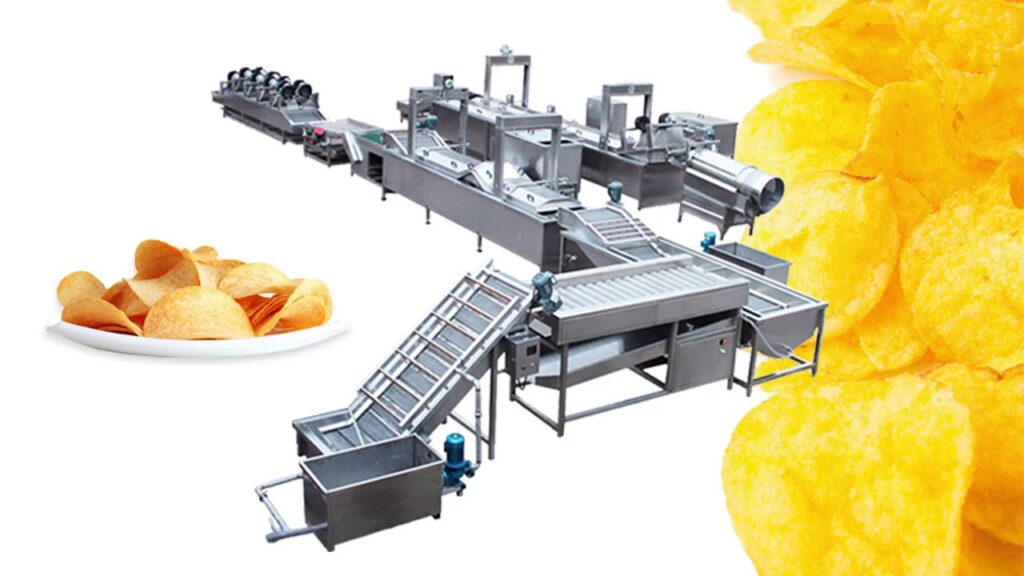Whether you’re a fan of potato chips or not, it’s hard to deny the popularity and ubiquity of this crispy snack. From barbecues to movie nights, potato chips are a go-to option for many people around the world. But have you ever wondered how these delicious chips are made? Look no further than the fully automatic potato chips processing plant.
The full automatic packaging line is at the heart of this chips manufacturing process. It is responsible for efficiently packing the chips into bags and ensuring they reach consumers in perfect condition. This intricate process involves several stages, from sorting and washing the potatoes to frying and seasoning the chips.
In this article, we will take a closer look at the full automatic potato chips production line and explore how it revolutionized the chips manufacturing industry. So, sit back, relax, and join us on this journey behind the scenes of your favorite snack.
The automatic plant starts with the sorting and washing stage. Here, the potatoes are carefully inspected for defects and washed to remove any dirt or impurities. The high-speed conveyor belts and sensors work together to efficiently sort and clean the potatoes, ensuring only the best quality ones make it through to the next stage.
Once the potatoes are sorted and washed, they are then peeled using state-of-the-art equipment. This step not only removes the outer skin of the potatoes but also ensures that the chips have a consistent texture and taste. The peeling process is carried out using a combination of water and brushes, leaving the potatoes clean and ready for slicing.
Next up is the slicing stage, where the potatoes are transformed into thin, uniform slices. The automated slicer ensures that each chip is cut precisely, guaranteeing consistency in size and thickness. This is essential for achieving the perfect crunch in every chip.
After slicing, the potato slices are rinsed once again to remove excess starch. This helps improve the quality and crispiness of the final product. The rinsed slices then move on to the frying stage, where they are immersed in hot oil for a specific duration and temperature.
During the frying process, the chips undergo a transformation. They become golden and crispy, with their distinct potato flavor intensifying. The automatic fryer carefully controls the frying time and temperature, ensuring optimal results every time.
Once the chips are fried to perfection, they are directed to the seasoning stage. This is where the magic happens. The chips pass through a seasoning drum, where a combination of salt and other delicious flavors is added. The rotating drum evenly coats the chips, ensuring that each one is packed with flavor.
Finally, the chips are ready for packaging. The full automatic packaging line takes over, efficiently bagging the chips and preparing them for distribution. The bags are precisely filled using the correct weight of chips, and then sealed to maintain freshness. Advanced technology and sensors ensure that each bag is properly sealed and ready for delivery to consumers.
The full automatic packaging line revolutionized the chips manufacturing industry by streamlining the production process. It significantly increased efficiency and productivity, allowing manufacturers to meet the high demand for potato chips. With this technology, large-scale production of chips became more feasible, making it easier for manufacturers to supply chips to markets worldwide.
In conclusion, the full automatic potato chips production line, coupled with the full automatic packaging line, has transformed the way chips are made. From sorting and washing the potatoes to frying and seasoning the chips, each stage of the process is meticulously controlled and automated. This technology has not only improved efficiency but also ensured consistent quality in every bag of chips. So, the next time you reach for a bag of your favorite potato chips, take a moment to appreciate the innovation and precision behind its creation.
Automatic Packing Line
“Efficient Potato Chips Production and Packaging: Automating the Process for High-Quality Results”

